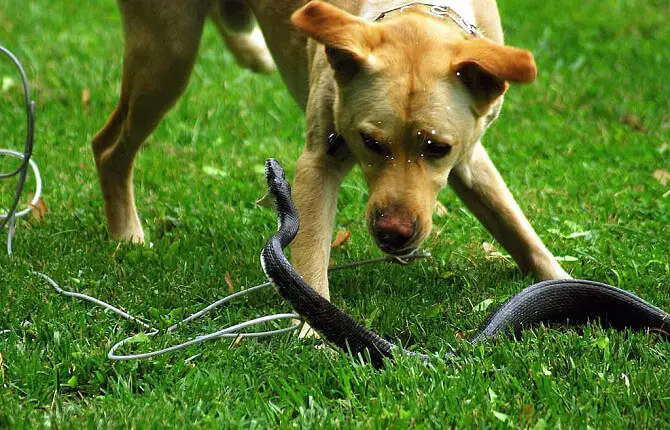It is unlikely that you will encounter a poisonous snake while hiking or even in your own garden. Because adders are very shy. But if a discovered snake feels cornered, the attack is the best defense. This can lead to an adder bite in the dog.
Dog: Snake Bite Symptoms

The safest way to spot an adder bite is when you notice the snake: the dog sticks its snout under a stone, whines loudly and an adder hastily snakes away. If you don’t see a snake after yelling, you should watch your dog closely. The following symptoms are possible after a snake bite in a dog:
- Pain and swelling at the bite site;
- Restlessness, whimpering;
- Apathy;
- Vomiting, reluctance to eat;
- Tiny injuries at the bite site at a distance of one centimeter;
- Panting, shortness of breath.
Those who don’t see a snake can easily mistake the symptoms for an insect bite. As with stings, snouts and paws are the main targets of the snake attack. Snake bites usually cause more severe complaints. Possible complications include bleeding disorders and circulatory shock.
How Dangerous is an Adder Bite for the Dog?
The good news is: Over 90 percent of dogs survive an adder bite if they are then given veterinary treatment. In addition, the adder is economical with its venom and releases only a little of it when it bites to defend itself. Dogs that have been to the vet no later than 12 hours after the bite have the best chance of survival.
The smaller the dog, the greater the risk.
Adders poison can be fatal, especially for dogs under 20 kg. In rare cases, long-term effects such as kidney and heart muscle damage occur after an adder bite in dogs.
What to Do if the Dog is Bitten by an Adder?
The most important thing is to keep calm! Because if you lose your head after being bitten by an adder, your four-legged friend will also be unnecessarily upset. Often bites occur while hiking. To organize the quickest possible way to the vet. Since the adder bite can cause pain, you should protect your dog from it. For example, by carrying a small dog when it has been bitten in the paw. Cooling the bite site can relieve the pain. Offer your dog water and do not urge him to rush. However, it is not necessary to immobilize the dog or tie the wound. In addition, apart from cooling, you should not act on the bite site.
You do not need to try a Hollywood-ready “statement” of snake venom.

